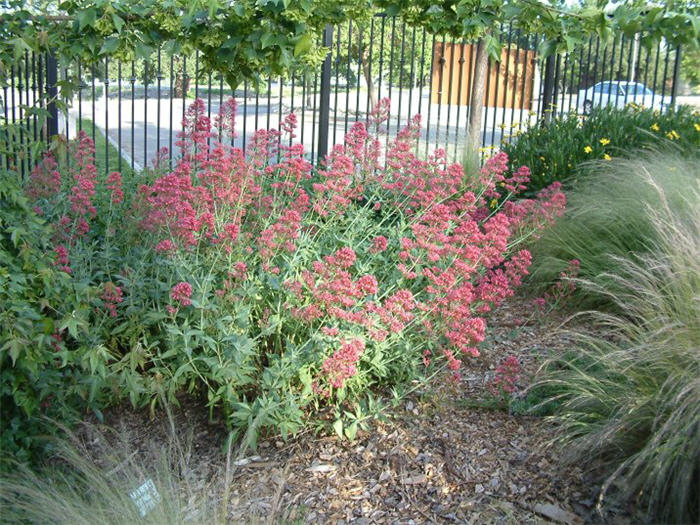| Botanical Name: Centranthus ruber | |
| Common Name: Jupiter's Beard, Red Valerian |

-
Anatomy
-
Culture
-
Design
Plant Type
Perennial
Height Range
1-3'
Flower Color
Pink, Red, White
Flower Season
Summer
Leaf Color
Green
Bark Color
n/a
Fruit Color
n/a
Fruit Season
n/a
Sun
Full, Half
Water
Medium
Growth Rate
Fast
Soil Type
Sandy, Clay, Loam, Rocky, Unparticular
Soil Condition
Average, Rich, Poor, Well-drained, Dry
Soil pH
Neutral, Basic
Adverse Factors
Invasive
Design Styles
English Cottage, Meadow, Mediterranean, Seascape, Spanish, Woodland
Accenting Features
Showy Flowers
Seasonal Interest
Summer
Location Uses
Perennial Border, Shrub Border, Parking Strip
Special Uses
Cut Flowers, Erosion Control, Mass Planting
Attracts Wildlife
Butterflies
Information by: Stephanie Duer
Photographer: Susan Frommer/Jacobs
Photographer: Susan Frommer/Jacobs
-
Description
-
Notes
An old fashioned favorite, Jupiter's Beard is a dependable perennial with a long season of bloom and a tough constitution. Blooms most heavily in late spring to early summer, with periodic water and some deadheading, it will bloom nearly all summer. Flower color ranges from carmine red to rose red; there is also a white-flowered variety. Foliage is lush green and fleshy. Grow in sun to part shade in any well drained soil. Excellent cut flower, it is also attractive to butterflies. Grows 24 to 36 inches tall and about 30 inches wide.
Not fussy about its surroundings, Jupiter's Beard is at home in a xeric garden or a more traditional perennial border, though it will have a longer bloom season when periodic watering is provided. Deadheading will increase the season of bloom; see guide for more information. If happy in the garden, it will spread by seed and stolon, which can be a good thing, though sometimes a little too much so.